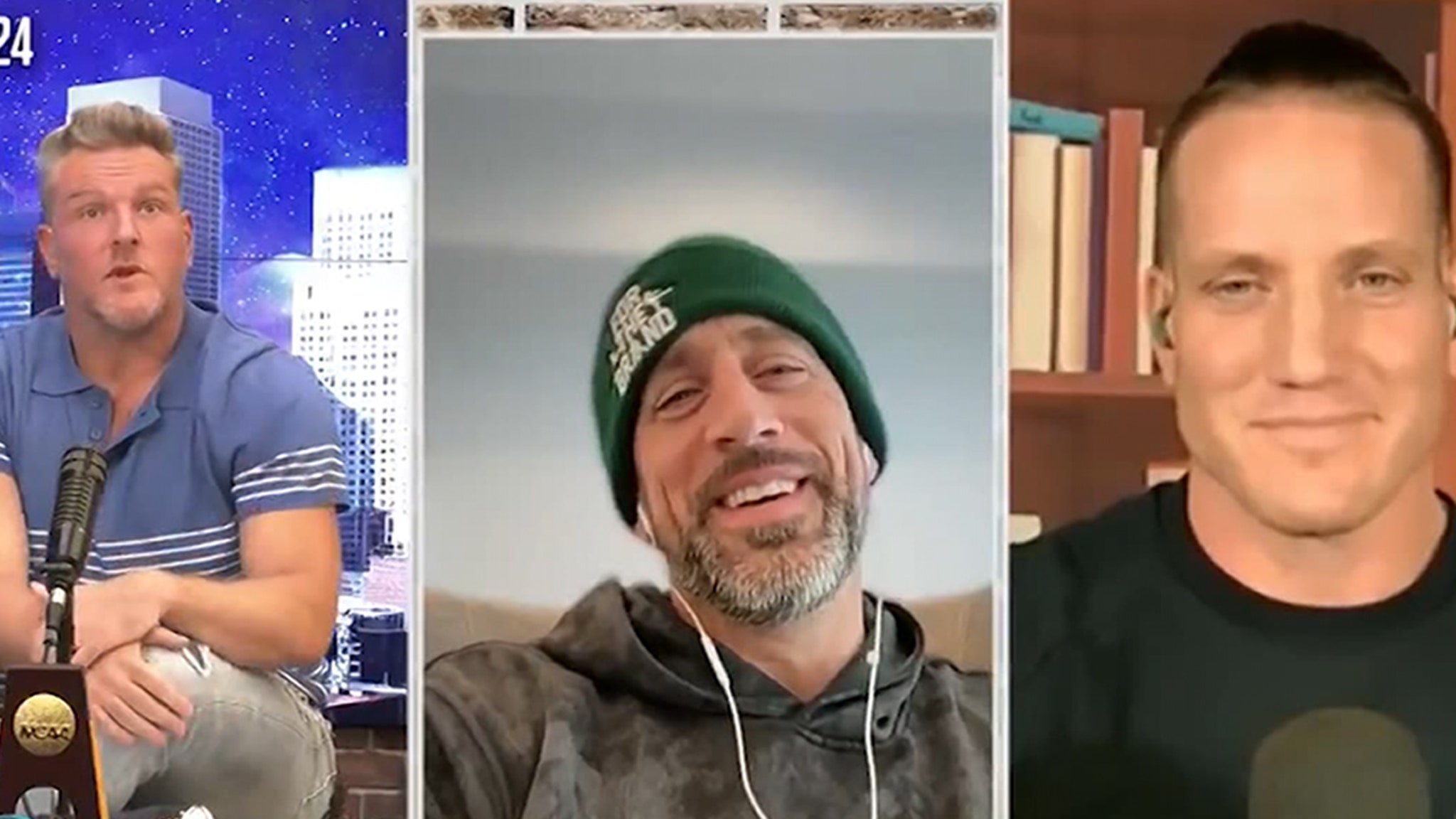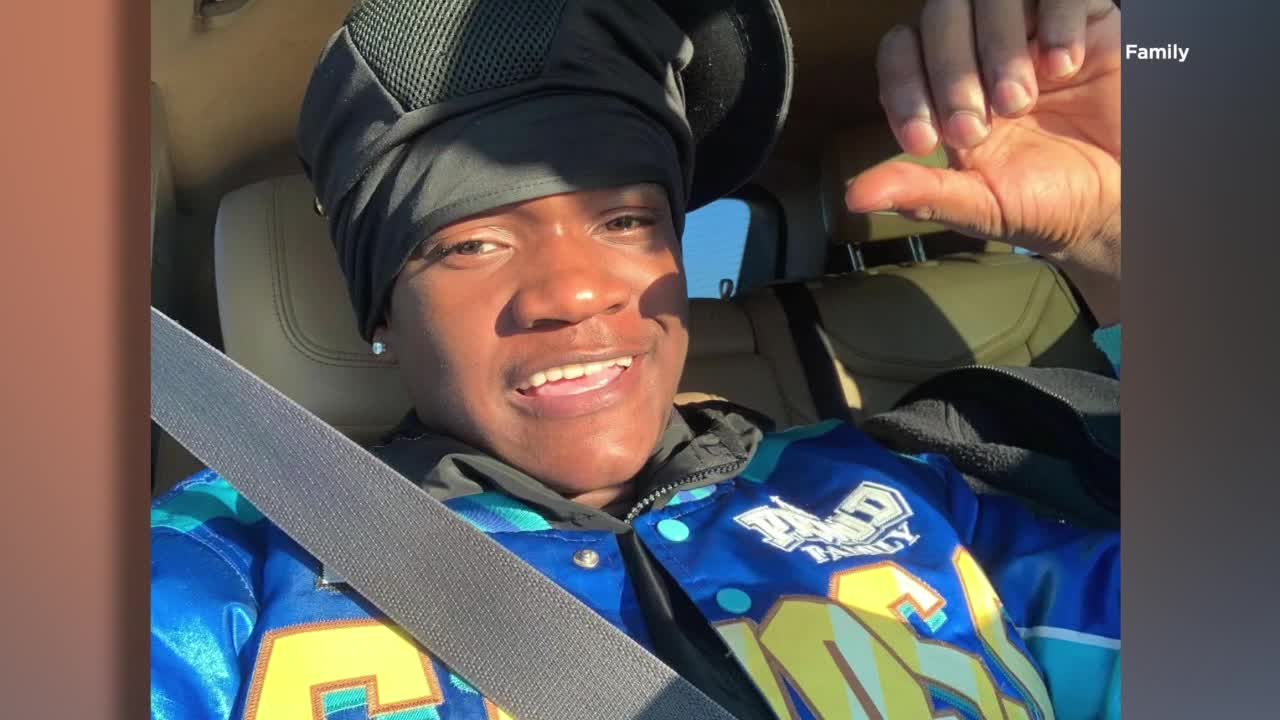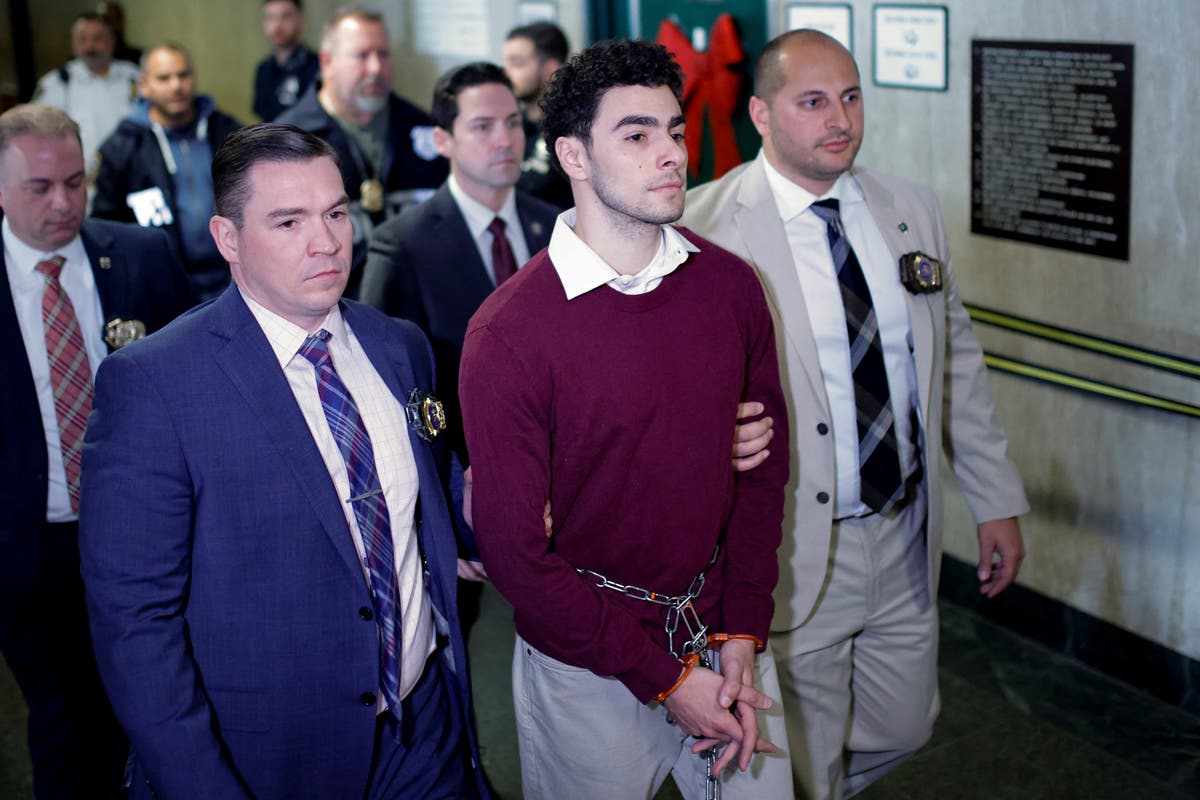Lifestyle
How personality trumped policy in this media election cycle

Donald Trump speaks to the media at Green Bay Austin Straubel International Airport in Green Bay, Wisc., on Oct. 30, 2024.
Chip Somodevilla/Getty Images
hide caption
toggle caption
Chip Somodevilla/Getty Images
Looking at the media coverage leading to and throughout President-elect Donald Trump’s massive electoral success Tuesday, I wonder if we are seeing — at least a little bit — the impact of politics rendered as entertainment and spectacle.
Former Trump press aide Erin Perrine touched on the point Tuesday during the chatty live election night special hosted by ex-NBC anchor Brian Williams on Amazon’s Prime Video. Perrine noted Vice President Kamala Harris may have spent too much time during the campaign focused on her opponent, making the election seem like a referendum on his personality.
“Not only are we a deeply divided nation, but we aren’t sure where we want to go directionally at this point,” Perrine said early in the evening, before the size of Trump’s victory was apparent. “It’s a policy versus personality conversation that voters are having with themselves.”

Williams’ election special itself seemed to reflect the turn toward spectacle, conducted from a studio set in Los Angeles with huge screens to display sweeping graphics, deploying the kind of technology used to film TV shows like Disney+’s The Mandalorian. They had no decision desk for calling vote projections — which kinda seems the point of live election specials — forcing the audience to focus on the entertainment of seeing big-name guests spar with each other while Williams cited results originally reported on other news platforms.
That turn toward entertainment benefits a candidate like Trump, who is an expert at building an image aimed at captivating and engaging people, using the news media as his messenger. Over his presidential campaign, there was plenty of coverage detailing what policies he proposed to advance in a second term — from extensive tariffs to mass deportations of undocumented immigrants.

But I suspect what really moves many Trump fans is his unique charisma, turning rallies into a display where he can say and do things which would typically end a conventional politician’s career. (Remember what he did with a faulty microphone at a recent rally?)
Helping him out are areas in media — and elsewhere — that pundit Matthew Sheffield has labeled “partisan ecosystems,” like Fox News Channel, Newsmax and conservative-friendly podcasters like Joe Rogan. Sheffield notes these corners of media can provide lots of important benefits to politicians: attacking political opponents, defending candidates’ behavior, keeping people loyal to the party and encouraging people who may feel negatively about the candidate to vote with the party.
It’s a media environment where politics is often presented as an entertaining spectacle, with amped-up conflict featuring distinct heroes and villains.
Over the past election season, my thoughts have turned many times to a legendary book, Neil Postman’s prescient 1985 analysis, Amusing Ourselves to Death: Public Discourse in the Age of Show Business — often used as a textbook in many media analysis and ethics classes. It argues a now-obvious idea: as entertainment becomes a larger element in news coverage, especially on TV, a political leader’s image and ability to entertain us may become more important than their actual policies or actions.
And creating a powerful image is what Trump has excelled at, from his earliest days decades ago building his persona as a real estate baron in New York, to his modern incarnation as a political strongman promising to impose his will on American society. His supporters find him entertaining and feisty; even critics who hate his policies or his demeanor find it difficult to avoid talking about him.

When Harris first stepped up to assume the Democratic nomination from President Joe Biden, it seemed she might have found a way to create her own spectacle — focusing the political conversation on her rapid rise, selection of a running mate, unique identity and the need to introduce herself to voters, despite serving as vice president for nearly four years.
Watching the sitting vice president navigate a wave of media interest that included memes after pop star Charli XCX declared “Kamala is brat” and suggestions she go on the celebrities-interviewed-while-eating-hot-wings YouTube show Hot Ones, you couldn’t escape the sense that Harris faced pressure to entertain the public while explaining why she should be elected president.
But that dynamic quickly changed again, as talk turned to the outrageousness of Trump’s actions — from using expletives to refer to Harris in speeches to presenting a rally in New York City featuring a comic who joked about Puerto Rico as a “floating island of garbage.” It seemed an extension of an ethic Trump developed long ago: That being talked about in the press is always better than not being talked about, even if people are mostly saying he’s terrible.
And the media elements connected to his effort — from selling keepsake Bibles to hawking Trump-centered NFT’s with gaudy images and appearing with popular podcasters like Rogan — kept the public focused on the GOP candidate’s outsized image.
Trump’s ability to yank back the spotlight persisted, even when Harris pulled off her own spectacles — like superstar endorsements from Beyoncé and an appearance on Saturday Night Live with her doppelganger, Maya Rudolph.
That kind of media ubiquity – where people are entertained and feel a connection to a big personality – doesn’t just excite supporters. It seems calculated to reach voters who are less involved in the political process, like undecideds and first timers. It also can make extreme policies seem more palatable, allowing supporters to shrug off or downplay Trump’s talk of prosecuting enemies or deporting masses of undocumented immigrants.
What once struck me about conservatism in a simpler time — say, the days of George W. Bush and Sarah Palin — was that the party developed a way of talking about the issues anyone could adopt, like learning a language. But Trump’s ability to leverage media attention as entertainment seems more unique to him — something that legendarily awkward figures like JD Vance and Ron DeSantis might have trouble re-creating, raising questions about how lasting the impact may be.
In the days and weeks to come, there will likely be a lot of columns like this, trying to make sense of a result that some didn’t see coming, and which heralds tremendous change for society and media.
But it may be wise to consider how the rise of politics as entertainment, and the media’s contribution to that ascent, has shaped the current social landscape.
Edited by Jennifer Vanasco. Web page produced by Beth Novey.

Lifestyle
Forget what you think you know about fruitcake

“There’s a lot of terrible candied fruit out there, unfortunately …” says cookbook author Camilla Wynne. “It’s fair that they get a bad rap, but they aren’t representative of candied fruit generally.” In her book Nature’s Candy, Wynne guides cooks through making not-terrible candied fruit, for cakes such as the Stollen Pound Cake, above.
Mickaël A. Bandassak/Appetite by Random House
hide caption
toggle caption
Mickaël A. Bandassak/Appetite by Random House
For generations of Americans, making fun of fruitcake has been a holiday tradition. Even Sabrina Carpenter cannot resist piling on. “Fruitcake just makes me sick,” the pop star intones in a song on her new Christmas album that happens to be called Fruitcake.
But a Canadian pastry chef and master food preserver would like us to reconsider our assumptions. Camilla Wynne is the author of a new cookbook called Nature’s Candy. It’s an ode to the pleasures of candying fruits — and even the occasional vegetable — and baking with them.
Wynne said she completely understands why fruitcake got stuck with such a terrible reputation.

“I think it’s because there’s a lot of terrible candied fruit out there, unfortunately,” she said. “Bright red or bright green glacé cherries, and the problem with those, of course, is that they don’t taste like anything. It’s fair that they get a bad rap, but they aren’t representative of candied fruit generally.”
Fruitcake is fantastic, says Wynne, if you use excellent fruit, especially fruit you candy yourself. Still, the idea of candying fruit at home seems daunting at best, at least to this NPR reporter (and enthusiastic amateur baker). “Oh, I hate that you’re intimidated!” Wynne said in response to the hesitancy, “That’s like the last thing I want. [But] people are. I understand that.”
Candying fruit, Wynne insisted, is not any harder than boiling eggs. The technique is, basically, briefly simmering fruit in sugar water over the course of a few days.
“I’m candying a bunch of whole figs right now,” she said. “Every day, it’s not much more than watering your plants. They need to simmer for 10 minutes, so when I’m setting up to make dinner, I’ll just turn them on and put on the timer.”


Those candied figs are put to succulent use in Wynne’s Florentine tart recipe, along with candied cherries and orange peel. Even to a fruitcake skeptic, the cake recipes in Nature’s Candy look delicious. Her Tropical Terrazzo Cake (recipe below) uses coconut milk, lime juice and an array of candied tropical fruits. The cookbook also includes plenty of non-fruitcake recipes, such as caramel corn with candied ginger, and strawberry sugar cookies with candied jalapenos.
“You get all this jalapeno syrup with it too, and it makes a really good base for margaritas if you’re into that kind of thing,” Wynne noted with relish.

Back in the lockdown days of the pandemic, she added, many home cooks turned to baking bread. Candying your own fruit is similar, she says. It brings a sense of scaling up skills and quiet contemplation to the kitchen during a moment marked by violence and institutional turmoil around the world.
“Unwind, de-stress and connect to beauty,” Wynne suggested. “The world’s a bit nuts.”
And what goes better with nuts, after all, than candied fruit?
Tropical Terrazzo Cake
By Camilla Wynne
“They paused to breathe in steam rising from the oven and took extra helpings of pound cake sliced to reveal a terrazzo pattern of candied citron and glace fruits,” writes John Birdsall in one of my favorite culinary biographies, The Man Who Ate Too Much. The idea for this sturdy pound cake studded with chunks of candied tropical fruits and glazed with tart lime syrup came from that single line in this biography of icon James Beard. The book is full of literary descriptions like this that pull you right into the action, making it a pleasure to read. Most importantly, the book doesn’t downplay his queerness. I recommend reading it while you enjoy a slice of this cake. Use a variety of candied tropical (or tropical-adjacent) fruits, keeping in mind that it can always be a mixture of homemade and store-bought. I usually use pineapple, kiwi, papaya, citron, ginger, and cactus pear.
Serves 16
For the Cake
230 g (1 cup) unsalted butter, at room temperature (very soft)
533 g (2⅔ cups) sugar
1½ tsp salt
Zest of 1 lime
6 eggs, at room temperature
420 g (3 cups) all-purpose flour
250 mL (1 cup) full-fat coconut milk
500 g (2 cups) drained and chopped (½- to 1-inch pieces) mixed candied fruit, reserving the syrup
Preheat the oven to 350°F (175°C).
Generously grease and amply flour a 10- to 12-cup Bundt pan and refrigerate the pan until it’s time to fill it.
To make the cake, in the bowl of a stand mixer fitted with the paddle attachment, cream the butter, sugar, salt, and lime zest until light and fluffy. Add the eggs one at a time, beating well after each addition.
With the mixer running on low speed, add one-third of the flour and then half of the coconut milk. Alternate until all the flour and coconut milk are incorporated.
Scrape down the sides of the bowl, then beat on medium-high for 30 seconds to make sure everything is well blended. Fold in the chopped candied fruit.
Transfer the batter to the prepared pan. Give the pan a hard tap on the countertop to help settle the batter. Bake for 1 hour and 10 minutes to 1 hour and 20 minutes, or until a toothpick inserted in the center comes out clean.
Cool on a wire rack for 10 minutes. Meanwhile, make the syrup.
For the Syrup
125 mL (½ cup) candied fruit
syrup (see Note)
60 mL (¼ cup) lime juice
2 Tbsp dark rum (optional)
NOTE You can use any candied fruit syrup for this recipe or use the reserved syrup from the cake method. To make the syrup, in a small pot, combine the syrup and lime juice. Bring to a boil and cook until it is reduced by half. Remove from the heat and stir in the rum, if using.
To assemble, carefully turn the cake out of the pan. Use all the syrup to brush the cake all over the top and sides. Cool completely. The cake will keep, well wrapped, at room temperature for at least 5 days.
Excerpted from Nature’s Candy by Camilla Wynne. Copyright © 2024 Camilla Wynne. Published by Appetite by Random House®, a division of Penguin Random House Canada Limited. Reproduced by arrangement with the Publisher. All rights reserved.
Edited for radio and the web by Meghan Sullivan, produced for radio by Chloee Weiner, produced for the web by Beth Novey

Lifestyle
Aaron Rodgers Reveals He Has A Girlfriend

ESPN
Aaron Rodgers just revealed he has a new girlfriend!!!
The New York Jets star dropped the bombshell minutes ago on “The Pat McAfee Show” … telling Pat McAfee, A.J. Hawk and the rest of the guys he’s now dating a woman named Brittani.
No word on who she is or how they met — but Rodgers certainly appears to be really into her … as he said on the show he got her a Christmas gift — and he didn’t push back when McAfee ribbed him about being “in love.”
“It’s a good feeling, boys,” Rodgers said. “It is.”
Rodgers’ last public relationship was with actress Shailene Woodley. The two got together in 2020 and were engaged soon after … but split in 2022.

Prior to that, 41-year-old Rodgers had high-profile ‘ships with Danica Patrick and Olivia Munn.
He had been rumored recently to be seeing Mallory Edens — the daughter of Milwaukee Bucks owner Wes Edens — but unless her pet name is “Brittani” these days, it seems that’s kaput.
Congrats on the new love, Aaron!
Lifestyle
'May love rest gently in your broken heart': What to say to a grieving friend

It can be tricky to offer condolences to someone who is grieving. You want to show your friend you love them, but you also know there isn’t much you can say to heal your friend’s pain.
Jorm Sangsorn/Getty Images
hide caption
toggle caption
Jorm Sangsorn/Getty Images
This month, we asked our audience: What words of comfort do you say to a friend whose loved one has passed away? It was part of a podcast episode and story we did on how to support a grieving friend.
We received dozens of emails on this question. Some people shared the exact messages they sent to their own good friends. Others who have experienced loss told us what not to say — and what they wished people said instead.

As many can attest, it can be tricky to offer condolences — you want to show your friend you love them, but you also know there isn’t much you can say to heal your friend’s pain. Here are some ideas about what to say to a grieving friend. These responses have been edited for length and clarity.
‘May love rest gently in your broken heart’
Our 29-year-old son died unexpectedly in September. There really are no words to console us. Most comments that mention healing or finding peace, however well-intentioned, feel so unrealistic and oblivious to the depth of our loss. I hope we do find peace and some degree of healing eventually, but right now I need to sit with my grief.
I’ve thought a lot more about what I say to those who are grieving. The (barely) best I’ve come up with so far is: “May love rest gently in your broken heart.” —Betsy Hooper-Rosebrook
A simple way to break the ice
When my husband passed away unexpectedly five years ago, it was so hard for me to go to the grocery store or the post office. Everyone asked me, “How are you doing?” I felt like I needed to respond in a way that assured the other person I was OK when I was not.
However, two friends would always say, “It’s so good to see you,” and give me a hug. That took the pressure off of me. So now, with my grieving friends, I try to say that too. —Cindy Jackelen

Tell your friend they are wonderful
On a card, I usually say something like, “I know their life was better because you were in it.” People have commented that they loved hearing that. —Connie DeMillo
‘Sorry for your loss’ does not cut it
Of course it is exactly what you mean and is probably sincere, but it’s stock language. Come up with an original, personal message that’s your own. Ask yourself: What would you want someone to say to you if you were in that situation? Give that person the gift of five minutes’ thought and empathy. —Beth Howard

Send your friend a message of support on the death anniversary of their loved one. “It helps relieve the burden of grief when it is acknowledged and shared,” says reader Thomas McCabe.
Jorm Sangsorn/Getty Images
hide caption
toggle caption
Jorm Sangsorn/Getty Images
Mark death anniversaries on your calendar
I lost my wife of 42 years to cancer ten years ago. I always dread the approach of her death anniversary. But it’s comforting to receive a text from someone who remembers that day as well.
I have a friend who lost both her husband and her only child to cancer. I’ve marked those dates in my calendar and I send a simple text that says “Sending love to you today.” It helps relieve the burden of grief when it is acknowledged and shared. —Thomas McCabe
Bring up their laugh
Say, “I’ll always remember their laugh.” Every time I’ve said it to a grieving person, they perked up, smiled and were truly thankful. —James Vandeputte
Don’t say nothing
Having lost my son when he was 20, don’t say nothing. Saying something doesn’t remind a grieving friend of their loss. It’s already on their mind 24/7. —David Lavallee
Sit with them quietly
When my mother passed away in 1998, it was very difficult for me. Friends called and came by and said the typical condolences. I didn’t want to hear any of it.
I was sitting alone in my living room quietly when my then 14-year-old son reached out and held my hand. He sat with me and never said anything. After a while, he got up and went back to his room.
In that moment, I found total comfort and understanding. I knew I would get through this sadness. I wondered how my son could know this was all I needed. Sometimes, just sitting with a person and saying nothing is everything. —Sharon S. Barnes
Validate their pain
Several years ago, I had to deal with the death of two brothers and both parents over a span of about five years. I talked to a friend who had some training in grief counseling, and we worked out together some words to help me grieve and understand. It goes like this:
Your world has been shattered and is in a million pieces. It no longer makes sense. You can’t see how you can live and breathe and move in this world. But, given time, you will be able to put it back together. It won’t be the same world that you knew before, because there will always be a piece missing — forever. But you’ll be able to live and move in this new world that you’ve put together. Eventually, this world will make sense and start to work for you. You’re even allowed to go visit the place where the piece is missing and grieve.
I’ve been able to pass these words on to others who have been in severe grief, even strangers, and it seems to help. Maybe you can pass this message on to others. —Dan Corbett
Share the silliest memories
My mother-in-law died recently at the age of 94. Upon her death, I reminded my wife of 35 years of a humorous event that occurred when my mother-in-law was a mere 80 years old. We were walking behind her into her house and later, the same evening, I told my wife that her mom had a cute butt. When I reminded my wife of that, we both laughed and cried. —Wayne Mac
Thank you to everyone who wrote in with your words of support and love for grieving friends.
The digital story was edited by Meghan Keane. The visual producer is Beck Harlan.
Want more Life Kit? Subscribe to our weekly newsletter and get expert advice on topics like money, relationships, health and more. Click here to subscribe now. And follow us on Instagram: @NPRLifeKit.
-
/cdn.vox-cdn.com/uploads/chorus_asset/file/25789444/1258459915.jpg)
/cdn.vox-cdn.com/uploads/chorus_asset/file/25789444/1258459915.jpg) Technology1 week ago
Technology1 week agoOpenAI cofounder Ilya Sutskever says the way AI is built is about to change
-

 Politics1 week ago
Politics1 week agoU.S. Supreme Court will decide if oil industry may sue to block California's zero-emissions goal
-

 Business1 week ago
Business1 week agoFreddie Freeman's World Series walk-off grand slam baseball sells at auction for $1.56 million
-
/cdn.vox-cdn.com/uploads/chorus_asset/file/23951353/STK043_VRG_Illo_N_Barclay_3_Meta.jpg)
/cdn.vox-cdn.com/uploads/chorus_asset/file/23951353/STK043_VRG_Illo_N_Barclay_3_Meta.jpg) Technology1 week ago
Technology1 week agoMeta’s Instagram boss: who posted something matters more in the AI age
-
News1 week ago
East’s wintry mix could make travel dicey. And yes, that was a tornado in Calif.
-
/cdn.vox-cdn.com/uploads/chorus_asset/file/24924653/236780_Google_AntiTrust_Trial_Custom_Art_CVirginia__0003_1.png)
/cdn.vox-cdn.com/uploads/chorus_asset/file/24924653/236780_Google_AntiTrust_Trial_Custom_Art_CVirginia__0003_1.png) Technology3 days ago
Technology3 days agoGoogle’s counteroffer to the government trying to break it up is unbundling Android apps
-

 Politics4 days ago
Politics4 days agoIllegal immigrant sexually abused child in the U.S. after being removed from the country five times
-

 News4 days ago
News4 days agoNovo Nordisk shares tumble as weight-loss drug trial data disappoints















